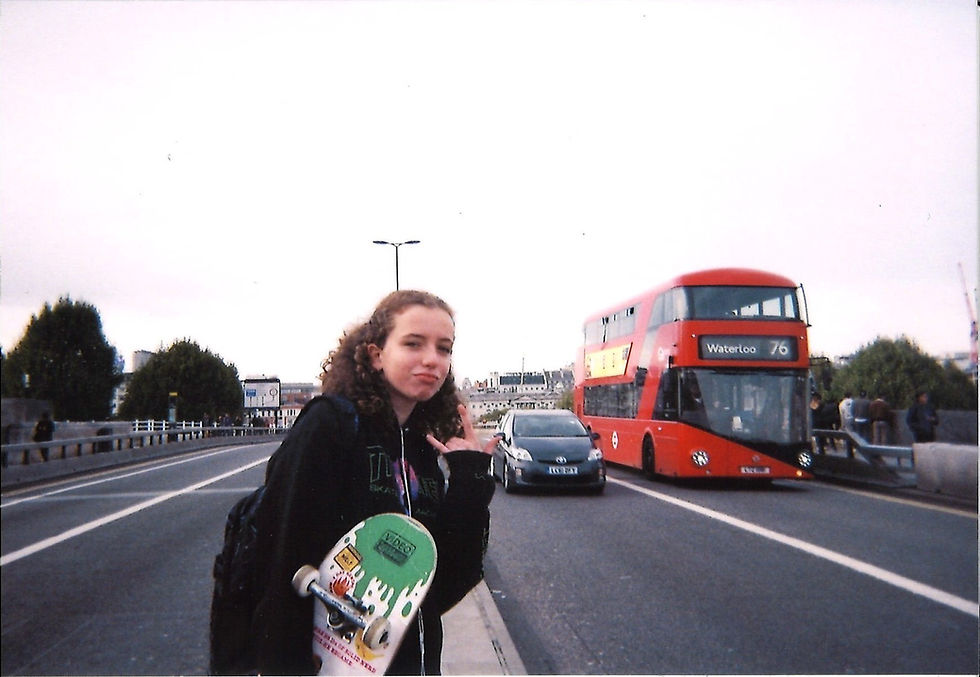Ride or Die: Skateboarding the National Gallery
- Farah Dianputri
- Nov 11, 2018
- 3 min read
From the standpoint of the mirror I discover my absence from the place where I am since I see myself over there.
– Michel Foucault, Des Espace Autres, March 1967


One Sunday afternoon, I joined a motley group of skaters on an impromptu race through central London. After sprinting Waterloo Bridge against the traffic (cruising by Somerset House and Duchy on the way), we embarked on a meandering path through Covent Garden towards our final destination, Trafalgar Square. By the time we threw our boards on the ledges of Nelson’s Column, a dim magenta sunset hung over Whitehall.


Most often when I’ve found myself around the National Gallery it has been with a seminar group or to peruse paintings for pleasure. Yet for those precious few hours the setting was recontextualized. To my surprise, one of the group’s favourite skate spots was beneath the bridge connecting the Sainsbury Wing to Wilkins’s National Gallery. The passing pedestrians were dusky shadows by then, phasing in and out of this intermediary space, never to be seen again; the skaters, on the other hand, kept returning, waxing a curb or kick flipping down the stairs. Like cult members in a trance, they repeated their routine or reinterpreted the line they followed.

In Of Other Spaces: Utopias and Heterotopias, Foucault introduces the idea of the heterotopia. As opposed to a utopia, the heterotopia is rooted in reality, where its significance is ‘simultaneously represented, contested and inverted’ by its various audiences. He posits two forms of heterotopia: crisis heterotopias and heterotopias of deviation. In these zones taboos and behaviours on the peripheries of societal norms are acted out. A skate park or spot can function as both, in the light of the inherently deviant nature of skate culture, especially since Foucault categorizes adolescence as a ‘state of crisis’. Skaters thrive in vacant spaces – whether a secluded stairway, a disused car park, or under the arches of a highway, they sanctify their surroundings, supplanting the absence with a shared skater-specific heterotopia.
In contrast Foucault sees to the art museum as a ‘heterotopia of accumulating time’, a place that is outside specific locations and times, vis-a-vis its collection that is at once preserved and built upon. The poignant notion of accumulation brings to light the fluid nature of the heterotopia ‘capable of juxtaposing in a single real place, several spaces, several sites that are in themselves incompatible’. Irrespective of the dichotomy between the skaters and the gallery, there is an evident overlap between cultural spheres in Trafalgar Square, from the street artists scrawling national flags in chalk to the cheering protesters with banners in tow.
Velasquez, Bronzino, and Holbein are not part of a skater’s vernacular. Consequently, the void in significance of the National Gallery gets filled with what is understood by the average skater, redirecting the established central focus of the gallery to its surroundings by ascribing their own value to it. The National Gallery isn’t alone in its attraction for skaters: the Museu d’Art Contemporani de Barcelona occupies the annals of skate legend in the Spanish skate capital; the Rijksmuseum is a backdrop to a particularly intimidating set of half-pipes on Amsterdam’s museum square.
Foucault sees the territories of the skater and the sculptor as ‘juxtaposing’ and ‘incompatible’, yet public spaces in city centres cannot occupy high culture and street culture separately. As art historians we elevate the gallery and its surrounding vicinity as representative of a solid institution, even though its status as a public space is for most its greatest importance. One may hold precedence over the other in guidebooks, yet seeing the coexistence of the different meanings to a space challenges the borders we draw. The Sainsbury Wing was built to house early Renaissance art, but its use as a skate park is no less significant: we shape our buildings, and afterwards we find their meanings.










Comments